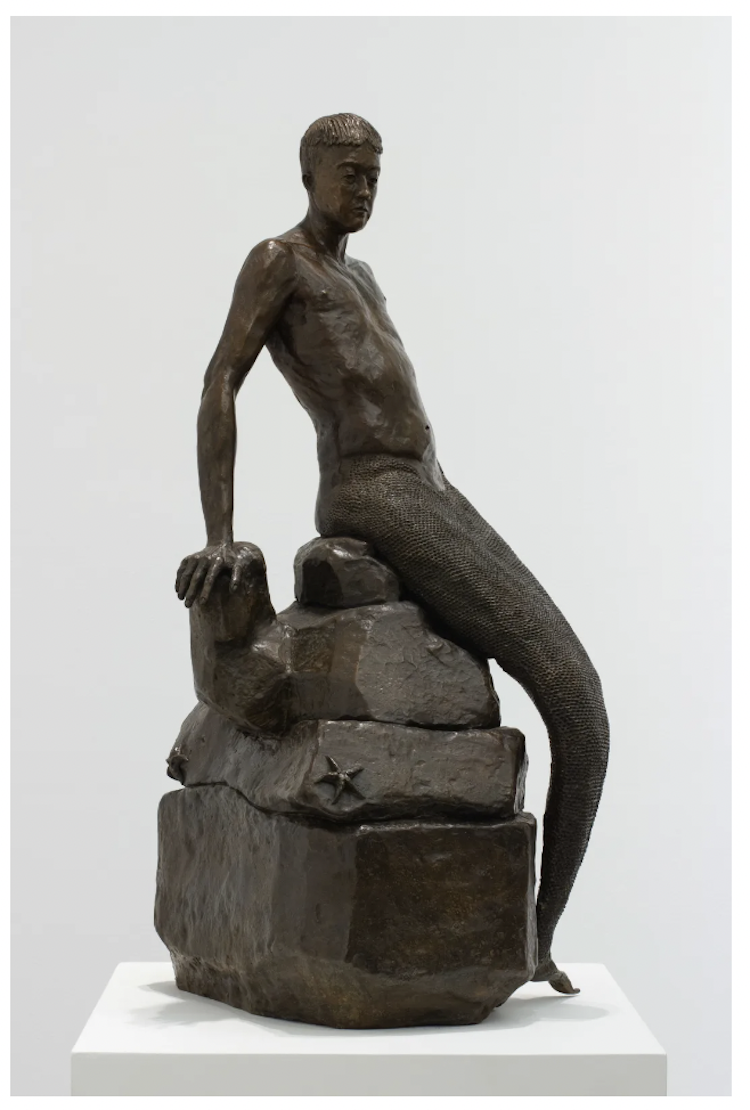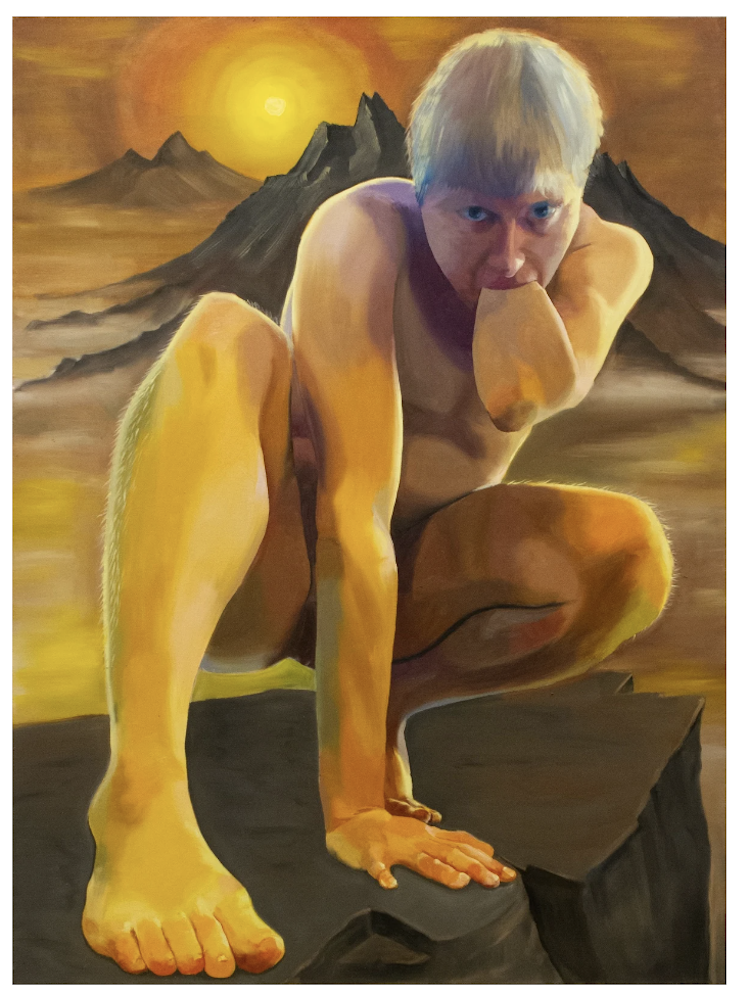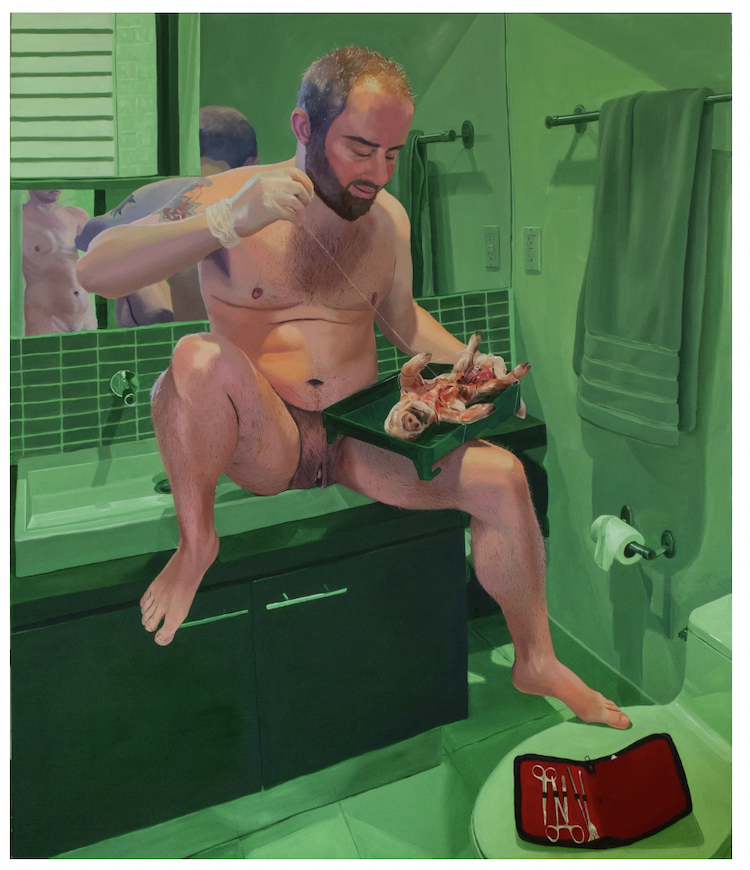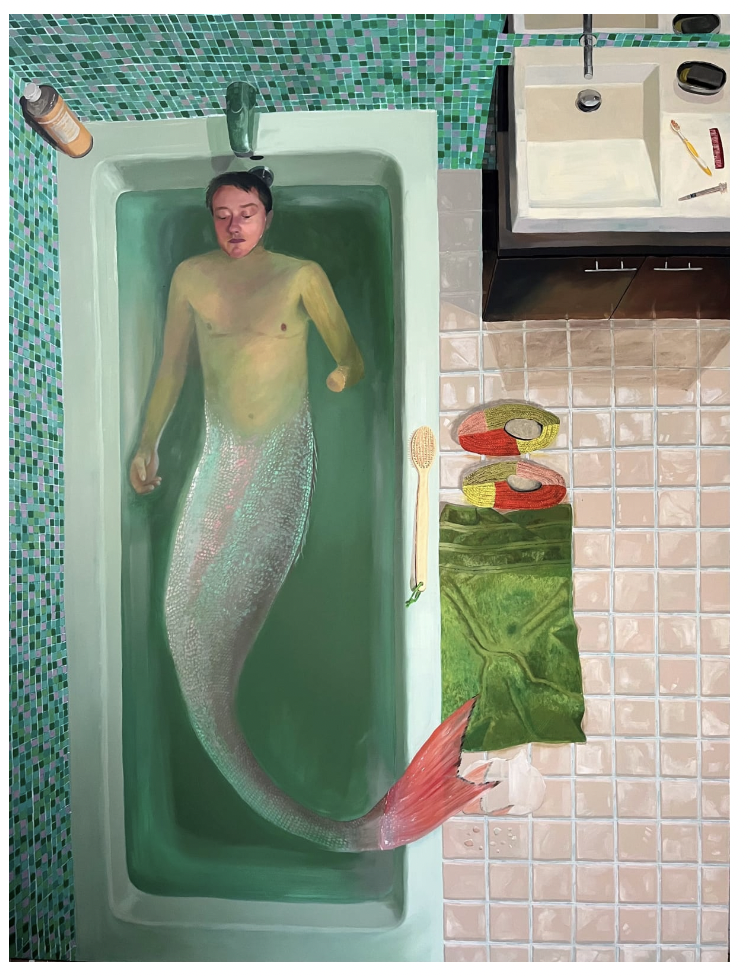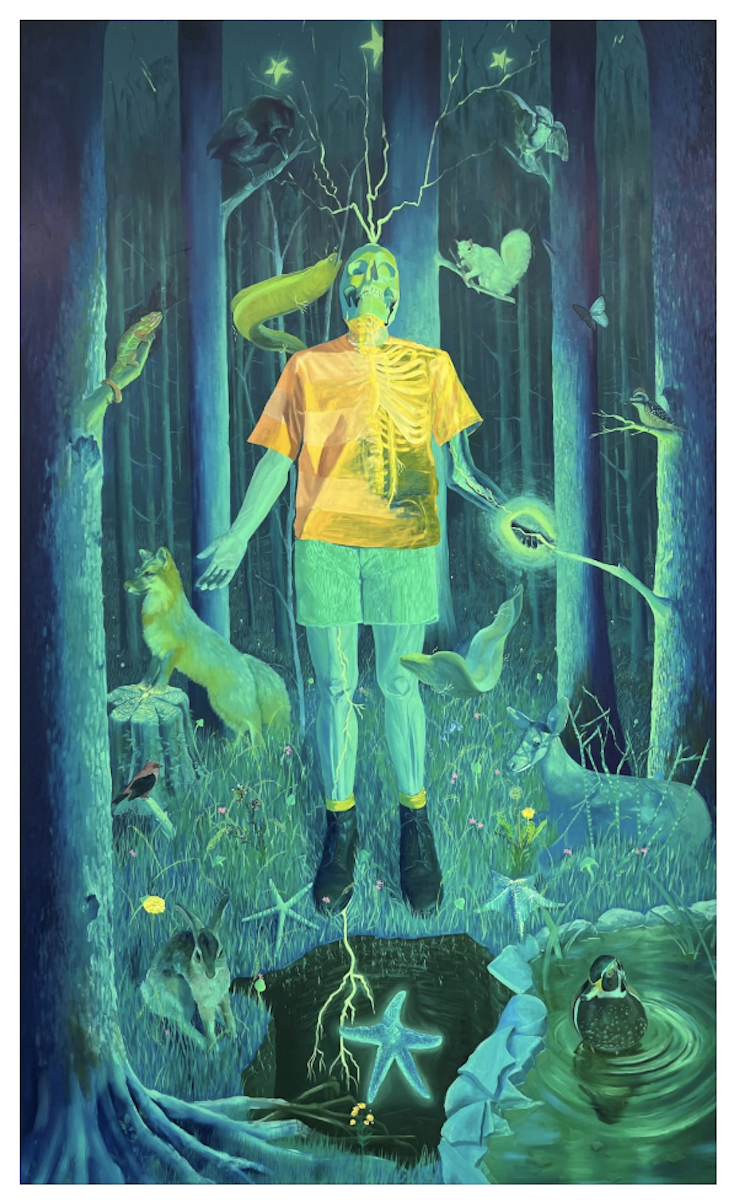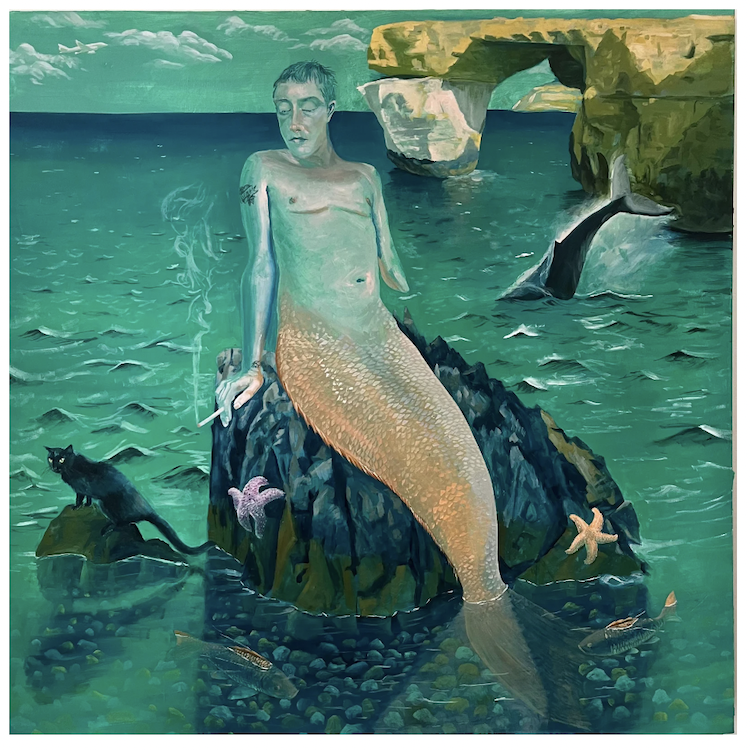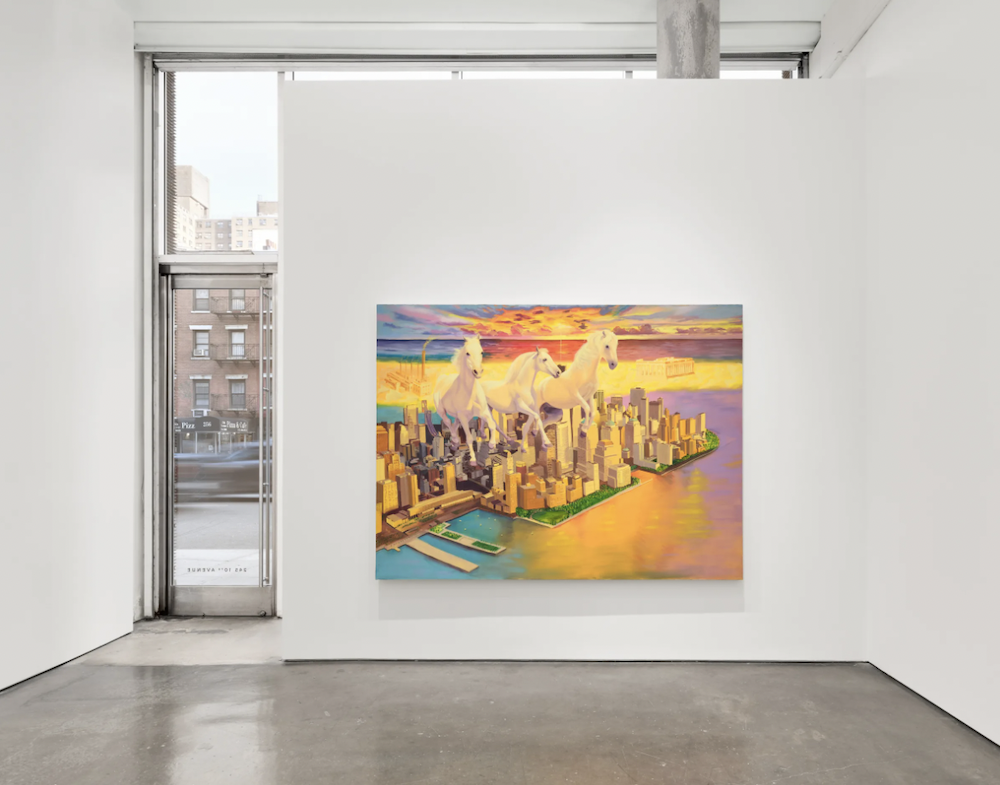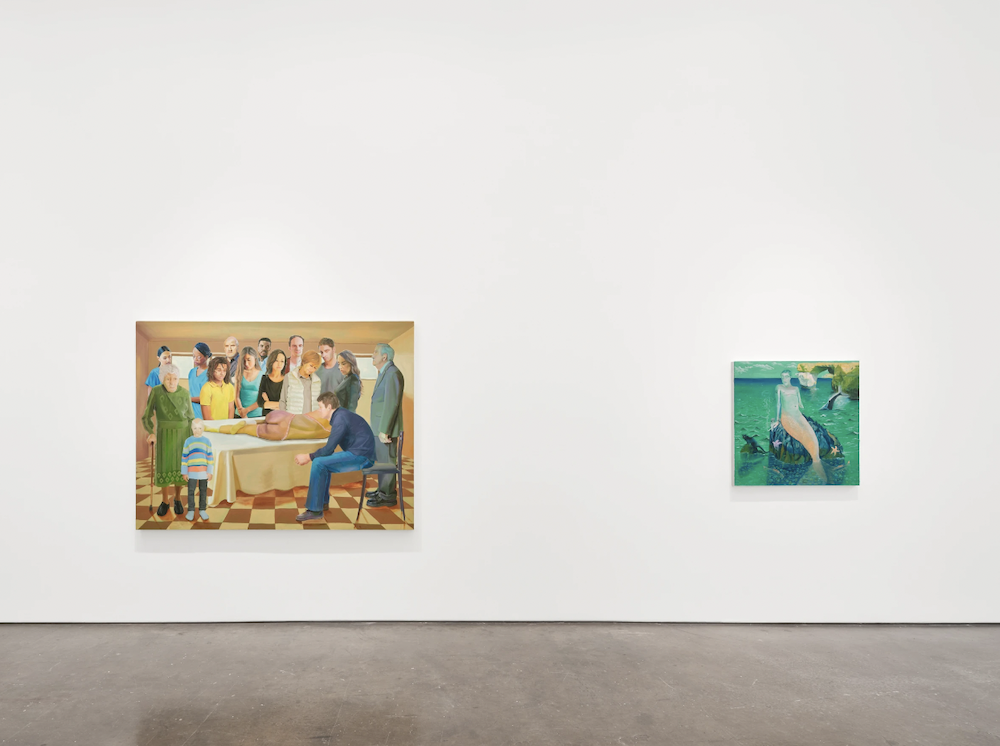Yossi Milo is pleased to announce Monstrum, Linus Borgo's debut solo exhibition in New York and first with the gallery. The show is on view through Saturday, January 20, 2024, and will present new works reflecting on transcendence, transformation, and transition as physical, aesthetic, and mythological phenomena.
Linus Borgo's work is immersive in both scale and content, with his paintings oscillating between sublime depictions of the aftermath of trauma, quotidian moments of daily life in the city and fantasies of other worlds where alternative configurations of the body form and disperse across wild landscapes. Borgo stages gender (and other bodily) transformations as spectacular experiments with form and flesh.
The title of this show, Monstrum, merges terrifying forms of mutation with omens of things to come. In it, Borgo traces the etymology of 'monster' all the way back to its Latin origins. The word 'monstrum' translates to "divine portent", formed on the root of the verb monere, meaning to warn. In this exhibition, Borgo imagines hybridized beings that simultaneously nod to the ancient origins of the word 'monster', and look forward towards radically new implications for the term.
Included in the exhibition is Borgo's largest work to date, Narcissus at the Halsey Street Oasis (2023). In this monumental work, the artist depicts himself crouching near a puddle underneath elevated train tracks. Borgo wears a pluming fur coat, and peers into a reflective, glowing pool of water that teems with fish and plant life. This luminescent puddle contrasts almost magically with the dim urban space that lies beyond. It is an oasis that offers a moment for quiet reflection amidst a bustling city, and a retelling of the mythical story of Narcissus, infamous for staring at his reflection in water and falling in love with himself. But it also stages a clash of artificial textures - faux fur, puddles, and neon light. Here, the artist steps out of the pastoral and into a world of glittering and plastic surfaces.
In Narcissus at the Halsey Street Oasis, Borgo positions himself as Narcissus who, according to myth, became infatuated with his reflection while gazing into a river and remained fixed there for so long that he eventually turned into a flower. By identifying himself as Narcissus, Borgo reimagines a myth that has sometimes figured in homophobic and transphobic theory, one that casts gay and trans people as incapable of normal relations to others and as pathologically fixated upon themselves and their appearances. Borgo thwarts these theories by suggesting that what the artist finds in the pool is not just his own reflection; it is another world, one where aquatic life flourishes, reflections are mutable, and possibilities for transformation are endless.
Exhibited for the very first time, Borgo's sculptural works will also be included in Monstrum. These bronze works depict the artist himself as fantastical creatures, such as mermen and angels. The merman is a recurring figure in the artist's oeuvre, meant to embody and sanctify the experience of existing in a liminal state. In Borgo's painted universe, the merman is a protest against dualisms that construct binaries between human and animal; man and woman; mind and body. With these new sculptures, Borgo materializes this dissidence in bronze monuments to the hybridized body, which he celebrates as a new mode of existence that is autonomous and freed from the constraints of the natural physical world.

